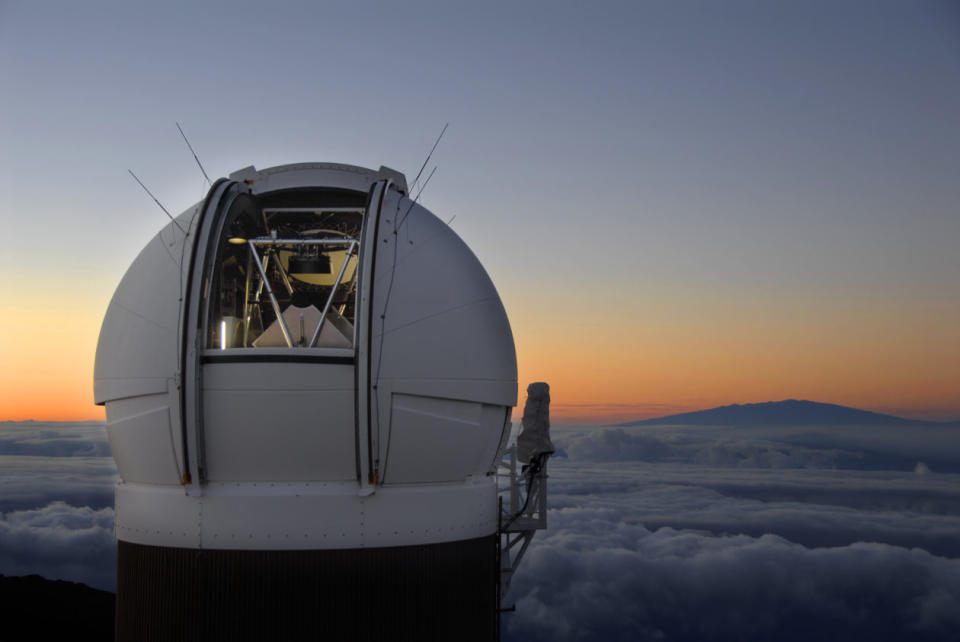Strange cigar-shaped object from outside our solar system is spotted near our sun
For the first time ever, astronomers have spotted an object which has entered our Solar System from the space between the stars – and it’s very odd indeed.
Researchers used measurements from ESO’s Very Large Telescope in Chile to study the object – which is dark, reddish, rocky or high-metal-content object, about 1,200ft long.
Scientists believe that it was travelling through space for millions of years before arriving near our Sun, according to results published in Nature.


On 19 October 2017, the Pan-STARRS 1 telescope in Hawai`i picked up a faint point of light – and scientists realised that its orbit showed that it came from the space between the stars.
At first scientists thought it was a comet, but it was reclassified as an asteroid and named 1I/2017 U1 (`Oumuamua).
Most popular on Yahoo News UK
Gaia Pope death ‘not being treated as murder’ as three people arrested are released without charge
World’s longest aircraft the ‘Flying Bum’ seriously damaged after it crashes AGAIN
Here’s how to see messages someone has ‘deleted’ on WhatsApp
Fugitive taunts police by posting sightseeing pictures on Facebook while on the run
The Queen and Duke of Edinburgh’s 70 years of marriage in pictures
Karen Meech of the Institute for Astronomy Hawaii, says, ‘This unusually large variation in brightness means that the object is highly elongated: about ten times as long as it is wide, with a complex, convoluted shape.

`Oumuamua is over 400 meters long, but only about 40 meters wide, and the interstellar asteroid had been flying through unpopulated space for millions of years before it happened to wander close to home.
‘We also found that it has a dark red colour, similar to objects in the outer Solar System, and confirmed that it is completely inert, without the faintest hint of dust around it.”
This suggests Oumuamua is dense, possibly rocky or with high metal content, lacks significant amounts of water or ice, and that its surface is now dark and reddened due to the effects of irradiation from cosmic rays over millions of years.
It is estimated to be at least 400 metres long.

 Yahoo News
Yahoo News 

